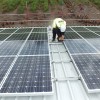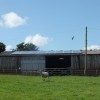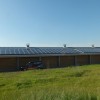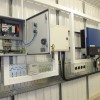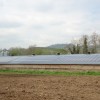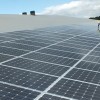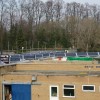Inverter Myths
In any emerging technology market misinformation can easily be perceived to be fact when it’s communicated with authority and conviction. At the present time there are a couple of ‘misinformation myths’ in circulation regarding Inverters – the heart of a Solar PV System that converts solar generated Direct Current electricity into useable Alternating Current.
Myth No 1: The Inverter should ideally be installed in the loft space.
This is fundamentally wrong given Inverters generate considerable amounts of heat and need to be kept in cool and well ventilated environments. The ideal location, as depicted here, is on a sheltered, north facing external wall. Of course this is not always practical or aesthetically desirable. The next best locations are unheated, well ventilated areas such garages and outbuildings. The loft or roof void is the option of last choice in many ways because these spaces are usually well insulated and poorly ventilated. Inverters located in roof spaces should always have good cooling fans. Excessive heat will most likely foreshorten Inverter working life. Cool Inverters seemingly live longer!
Myth No 2: The distance between the modules and the Inverter needs to be as short as possible due to a phenomenon called 'Voltage Drop.'
The reason Direct Current isn’t used for mains electricity supply is that there is a fundamental problem distributing it over long distances. There’s a loss of voltage (Voltage Drop) and consequently a wasteful loss of power.
The leading Inverter manufacturer is Germany’s SMA with a market share of 43%. Their boffins have calculated that Direct Current can travel up to 45 meters without Voltage Drop becoming an issue and even at 75 meters the loss is not worth the worry.
The notion that an Inverter should be installed in a roof void or loft so the cable run between it and the modules is as short as possible is therefore wrong on two counts.
Inverter Failure – Plan to Replace at Least Once
SMA Inverters come with a standard 5 year warranty, which can be readily extended up to 25 years in exchange for a premium:
SMA inverters up to 4 kW: 10 years £ 180.00 l 15 years £ 340.00 l 20 years £ 525.00 l 25 years £ 1,030.00
SMA inverters 9 to 12 kW: 10 years £ 345.00 l 15 years £ 690.00 l 20 years £ 1,035.00 l 25 years £ 2,055.00
Note: Premiums correct as at May 2011
When calculating payback periods it is sometimes best to assume the worst. Looking at the scale of the 20 and 25 year premiums it appears there’s a reasonable probability that Inverters will need to be replaced at least once during the 25 year FIT scheme term. This needs to be legislated for when calculating payback periods.
Thought should also be given to how expediently a failed Inverter will be replaced particularly in the high output summer months. Staying on friendly terms with the Installer is doubtlessly desirable.
As the Solar PV Installation market is fairly immature the offering of long term or annual service contracts has not yet become the norm. The important thing is not to lose three months generating capacity for the want of a suitably qualified electrician who is free to help. The risk is probably more pronounced in an early stage market as Installation companies will quite understandably be focused on installing profitable new systems; not lower margin warranty or maintenance work.
In most cases the amount of time needed to replace an Inverter should be 30 to 40 minutes. This work should always be expedited by a suitably qualified electrician.
Always check the warranty to see if like-for-like or brand new replacements are being offered. Like-for-like seems to be the norm at the present time.
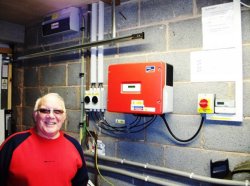 How a well installed Inverter should look?
How a well installed Inverter should look?
A good Inverter installation should look like that depicted in the picture to the right. The emergency shut down procedure and electrical schematic have been encapsulated in waterproof plastic to ensure a long and serviceable life. The latter will help and keep safe any electrician who works on the Solar PV System at any point in the future.






